SLC21/WK1: Empowering Life-Saving Skills: A Guide to First Response and Basic First Aid
This is my homework post for Steemit Learning Challenge Season 21 Week 1 assignment of Professor @abdu.navi03’s class, Empowering Life-Saving Skills: A Guide to First Response and Basic First Aid.
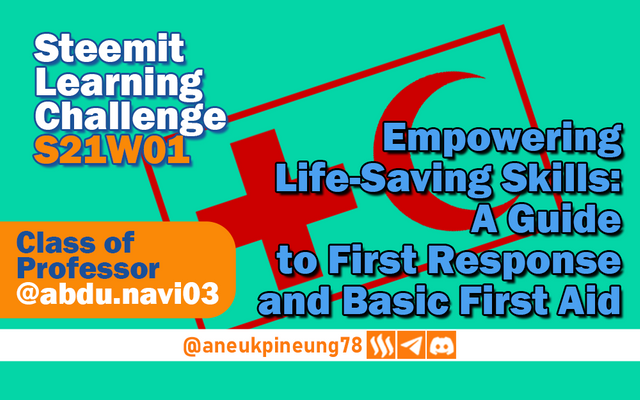
Note :
- I performed this task on Windows 10 PC, Google Chrome.
Task 1 - Share your any experience of your life, in which you faced the emergency that could be handled by your own only if you know the basic first response skills.
- Choking. Choking has probably happened to everyone, and I'm no exception. I experienced it one time, at which time my father helped me so that the emergency could be passed without further worries. If no one else is around, the person who is choking can help themselves by using the self-Heimlich maneuver, which involves leaning over a strong chair or table and pushing the body up to mimic the Heimlich push effect. It is also possible to make a fist over the navel and push it inwards and upwards.
- Minor Bleeding. Minor bleeding from wounds caused by cuts or minor accidents is also very likely to be experienced by everyone. The bleeding needs to be stopped immediately, a simple step that can be done independently is:
- Assist the blood clotting process by pressing the wound with a clean cloth or gauze for a few minutes until the bleeding stops;
- After the bleeding stops, clean the wound with warm water and antiseptic soap or antiseptic liquid;
- Finally, cover the wound with a plaster or gauze.
- Minor Burns. This is also a common type of condition. People can get minor burns while in the kitchen -for example- when accidentally holding a hot cooking utensil, happened to me several times. Minor burns, whether caused by flames or heat from other objects, can be treated independently by:
- immediately flush the wound with cold water for a few minutes (10 to 15 minutes is said to be enough time, but it depends on how severe the burn is);
- after the wound is cooled, apply moisturizer or aloe vera gel, we often see and are advised to apply toothpaste or butter to burns, which can actually aggravate the irritation.
- Sudden Cramps. I have experienced cramps several times. Sometimes when I'm exercising, and other times when I'm not doing anything. Cramps occur because the muscles contract suddenly and cannot relax again for a while. Cramps can cause severe pain in the muscle and can last a few seconds to a few minutes. Cramps can be caused by many things: dehydration, muscle fatigue (working too hard for a long time), poor blood circulation, incorrect body position, medical conditions, and so on. Because the muscle contracts suddenly and cannot relax immediately, it is necessary to stretch the muscle when a cramp occurs:
- massage the cramped muscle to reduce pain and relax the muscle;
- muscle compresses: a warm compress relaxes the muscle and a cold compress stops swelling, both of which help the muscle relax;
- consumption of electrolyte-containing drinks is recommended to prevent further cramping.

Task 2 - Imagine you are walking back home, when you witness a road traffic accident between a car and a motorcycle, and the motorcyclist is lying on the road, not moving. There’s some bleeding from his leg, and he appears to be unconscious. You being the first responder, how will you manage this scenario?
Here, in the theory that I have learned, the DRABC protocol finds its momentum and first responders should apply it to the best of their ability for the main purpose, which is to save the victim without risking themselves and others.
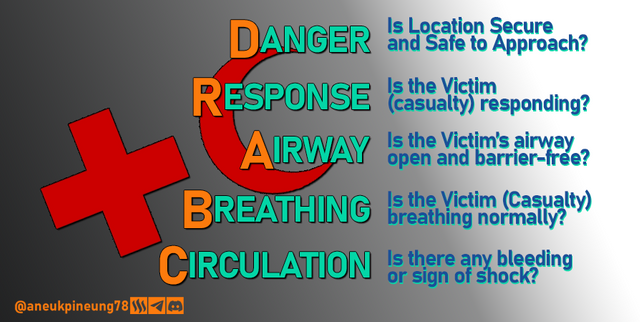
- Assess the Situation and Remove Any Possible DANGER Before Approaching the Victim. In this stage, as a first responder, I must ensure the safety of the location before approaching the victim. First responders should not endanger themselves by entering dangerous areas, for example, crowded streets, or scattered glass that carries risks. For a traffic accident like this, I think I would place a safety triangle if available as a warning sign to other vehicles to slow down.

Created with Adobe Photoshop 2021. - Check Victim's RESPONSE. Once I have confirmed the safety of the location and can get close to the victim, I will check for a response, by calling out and if I am sure there is no bleeding on the head I will shake the victim's shoulders slightly. In this case, there was no response from the victim.

Created with Adobe Photoshop 2021. - Check AIRWAY. I then ensure that the airway is well open for the casualty, including checking the mouth and nose for anything that might obstruct the airway. I will also ensure that the head is in the best position for the airway, i.e. the head-tilt, chin-lift method.

Created with Adobe Photoshop 2021. - Check BREATHING. The next thing to do is checking the casualty's breathing by noticing chest movement and feeling for breaths from the mouth or nose. In this case, I can feel that the person is still breathing normally, so I do not need to perform CPR, I conclude that the person has fainted. I would call the relevant emergency number or ask others who are nearby to do so. In a traffic emergency like this, the numbers to call in Indonesia are 118 (Ambulance) and 119 (Emergency Health Services including Ambulance).

Created with Adobe Photoshop 2021. - Check Blood CIRCULATION. Time to check the victim's pulse on the arm and neck. In this case I can feel the victim's pulse clearly. No problem with blood circulation, I guess.

Created with Adobe Photoshop 2021. - Treat Bleeding. I discover that there is a wound on the left calf, but it is not that bad. I press the wound with my shirt to reduce and possibly stop the bleeding. I will continue applying pressure to the wound until help arrived.
- Support Emergency Services Upon Arrival. When the emergency services arrive, I will provide them with the necessary information that I know regarding the traffic accident, such as what time it happened, what I have done, the breathing and pulse conditions of the victim, and the injuries the victim has.

Task 3 - Draw or Create an engaging illustration/flowchart of DRABC protocol (Try to be creative and don't forget to add your username on the illustration)
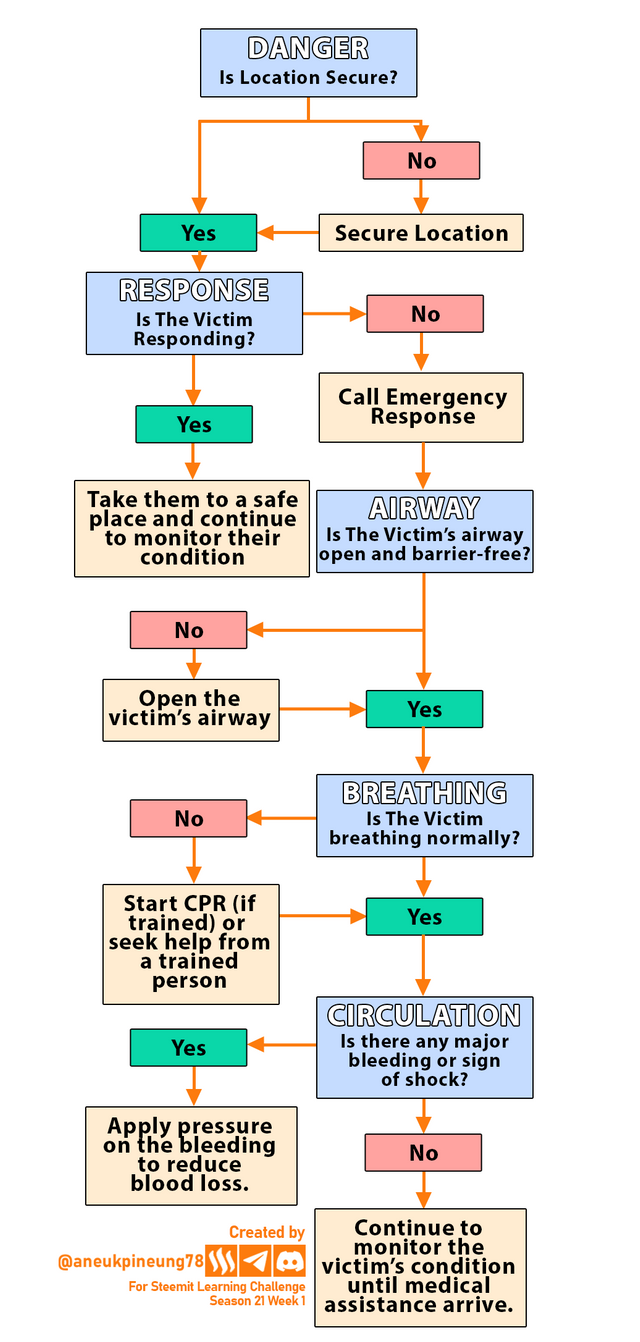

Task 4 - Write down the numbers of emergency services of your country/area on a paper (Minimum 5, maximum 10)
Here are 8 important hotline numbers for emergencies in Indonesia, in pen written on a piece of paper.
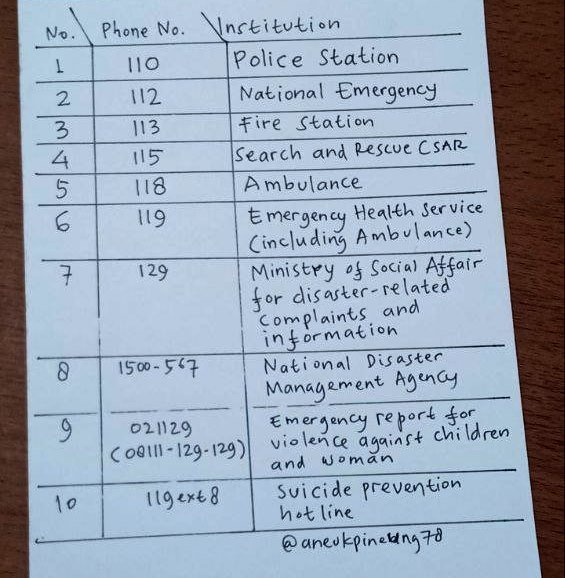
Yes! I know my handwriting is not that good, so I also prepared a computer typed version as follows.
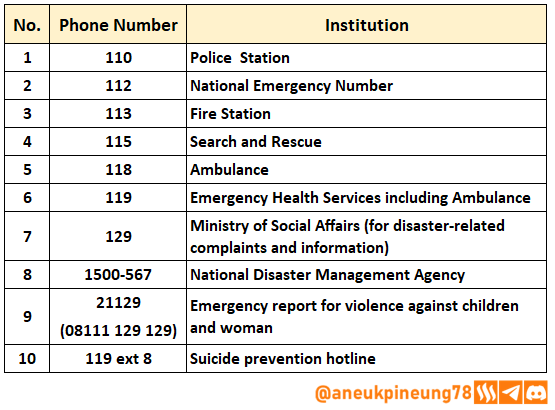

Task 5 - Complete the quiz based on this week's lesson to test your understanding. Access the quiz through this Link.
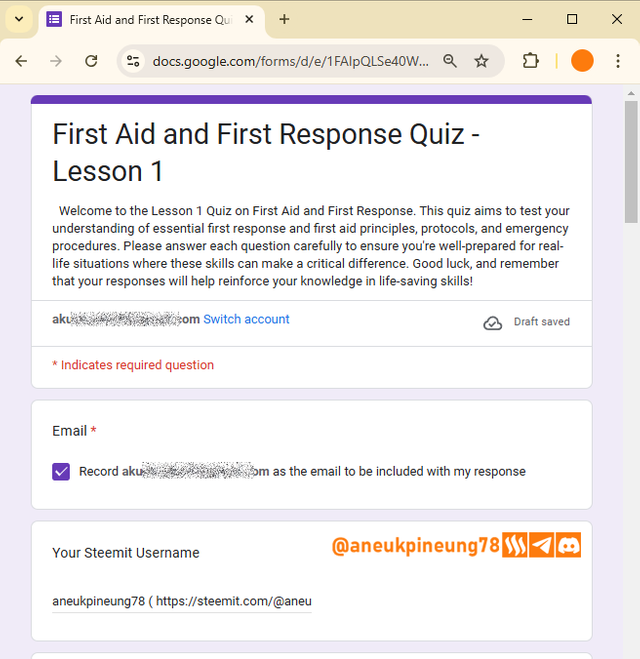
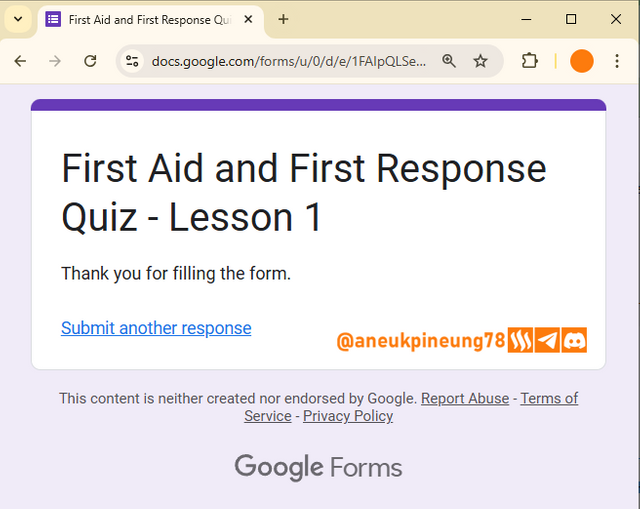

Thanks
Thanks Professor @abdu.navi03 for the lesson. I invite @rayfa, @anroja, @saintkelvin17.
Pictures Sources
- The editorial picture was created by me.
- Unless otherwise stated, all another pictures were also created by me using Adobe Photoshop 2021.
Readings
- https://ndfatraining.co.uk/first-responder-road-traffic-accident/
- https://www.grsproadsafety.org/wp-content/uploads/2023/05/EN_FA_RS_manual_webversion.pdf
- https://vivamutual.org/resources/preparing-for-an-emergency/
- https://www.emergencyfirstresponse.com/
- https://www.emergencyfirstresponse.com/courses/
- https://en.wikipedia.org/wiki/First_responder
- https://hei.org.ng/step-by-step-process-in-first-response/
- https://par.co.id/en/article/nomor-darurat-indonesia-yang-wajib-diketahui
- https://www.indonesia.travel/gb/en/general-information/staying-safe-in-indonesia.html
- https://en.tempo.co/read/1765392/important-emergency-numbers-for-you-to-save-in-indonesia
- https://ilovelife.co.id/blog/prinsip-drabc-bekal-berlalu-lintas-saat-nataru/
- https://www.skillstg.co.uk/blog/drabc-procedure/
- https://www.sja.org.uk/get-advice/how-to/how-to-do-the-primary-survey/
- https://humanfocus.co.uk/blog/primary-survey-with-drabc-steps/




https://x.com/aneukpineung78/status/1851879132197720469

Awesome post, you really did alot here and I appreciate your invite, participating in this particular one won't be easy for me but I will see what I can do. Good luck.
GET SOME SLEEP NOW
source
😂😂😂
Good work mate
Thanks. The class is amazing, very important thing has been taught.